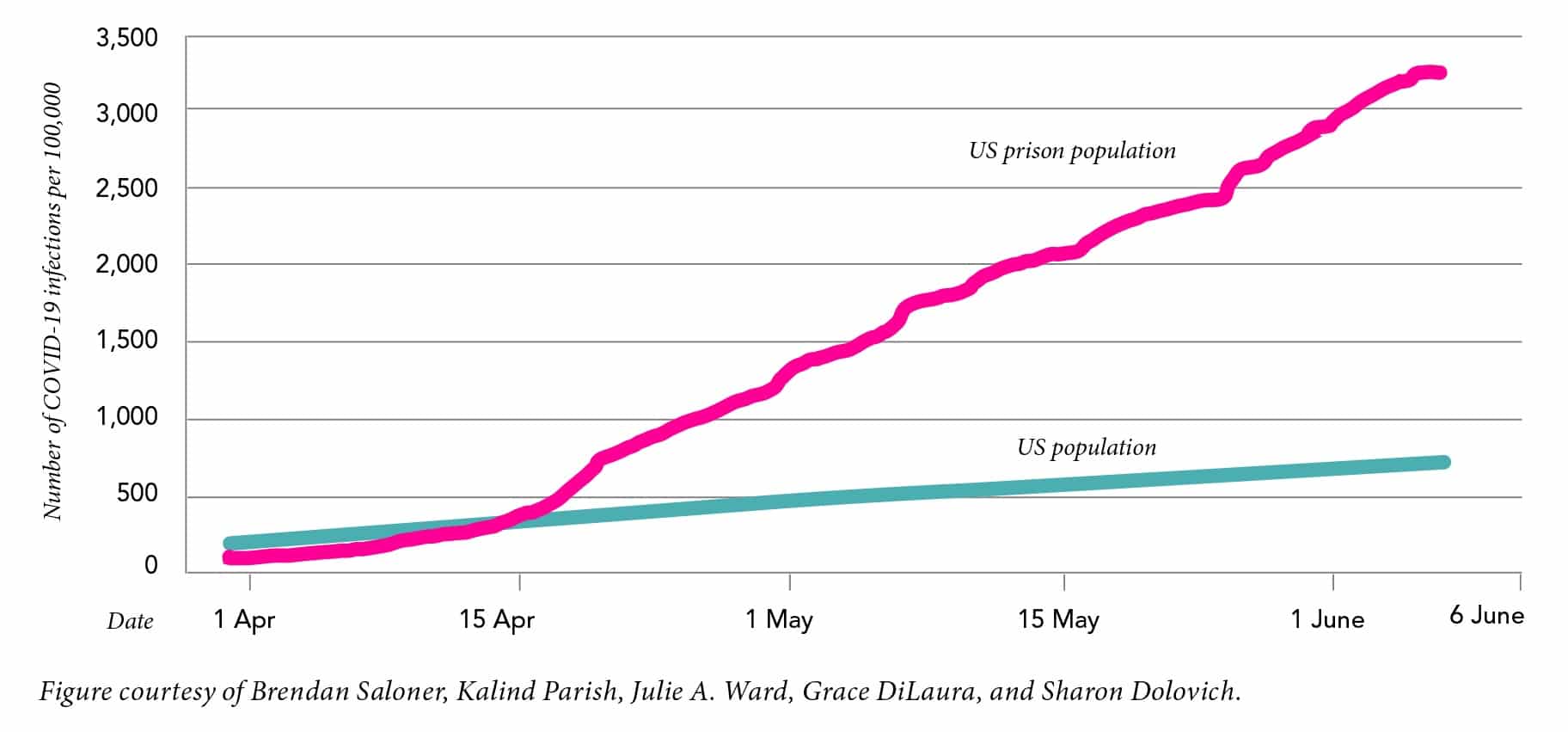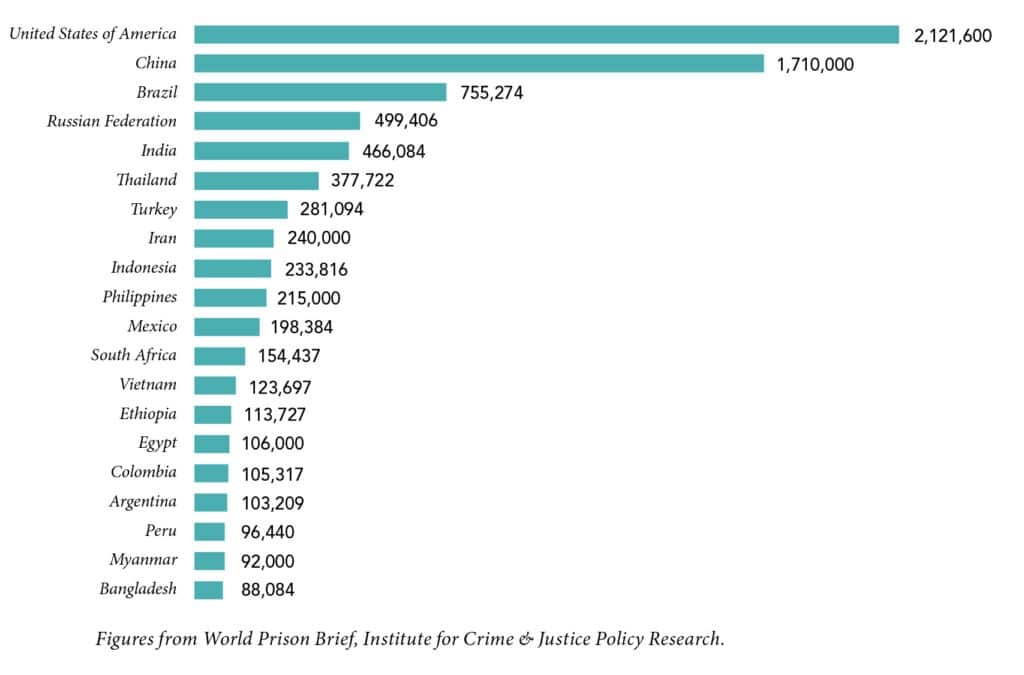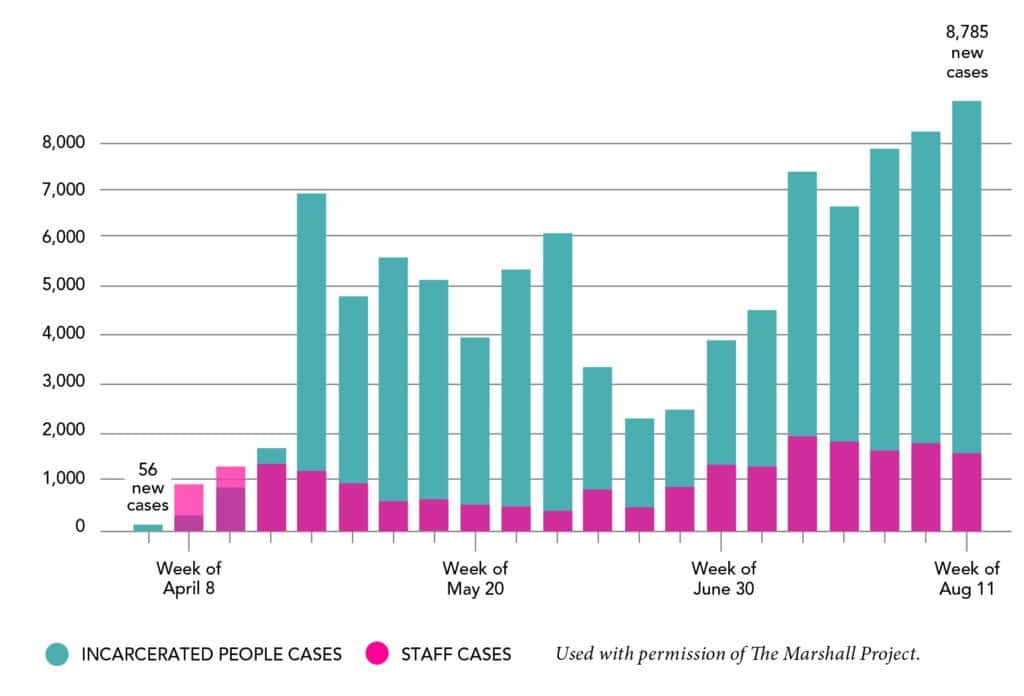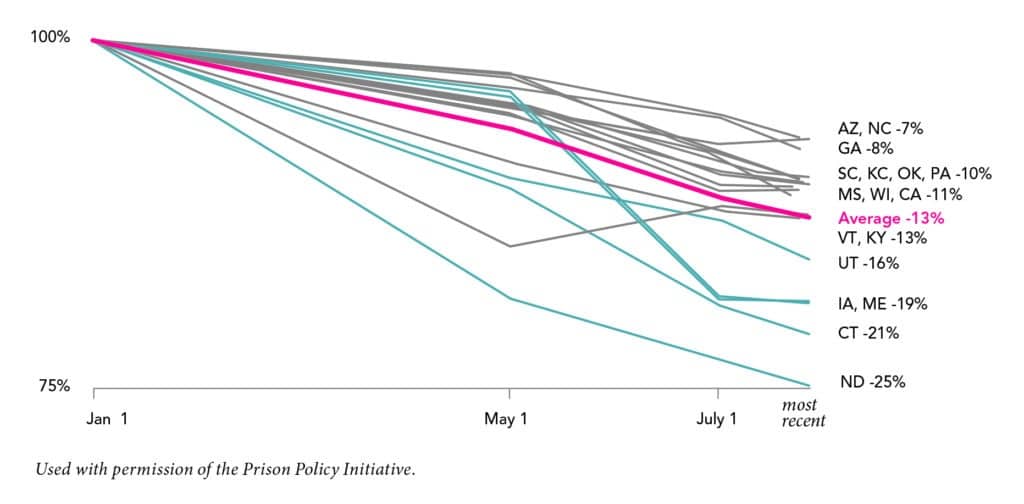COVID-19 Exposes a Broken Prison System
Figure 1. COVID-19 in US Prisons and the General Population

The COVID-19 pandemic has exposed innumerable flaws in US society, including a failure to ensure equitable community health, systemic racism, and a broken system of punishment and incarceration. Society has a duty to address these broken systems. As the pandemic continues to disproportionately infect and kill people in prisons and jails, the current system of mass incarceration must be reevaluated. Decarceration—the policy of reducing either the number of persons imprisoned or the rate of imprisonment in a given jurisdiction—can help flatten the curve of COVID-19 cases inside and outside correctional facilities. People who are merely incarcerated for inability to post bail, eligible parolees, older adults, those incarcerated for nonviolent offenses, and those who have served the majority of their sentence should be strongly considered for release.
Once cities and courts begin to reopen, the nation cannot go back to business as usual in the criminal justice system. We must ask: Why do other countries thrive with far lower incarceration rates? Do they tolerate more crime and violence? Is the United States more criminal than every other country? The nation has created and endured a prison industrial complex that drives specific populations behind bars. Mass incarceration has unjustly imprisoned many people of color, Indigenous people, and poor people who pose little threat to the community. Society’s response in the wake of the COVID-19 pandemic can work to undo one of the greatest structural drivers for public health disparities: mass incarceration. The nation has a duty to change.
WHO IS INCARCERATED
Figure 2. Countries with the Highest Prison Populations

As of August 1, 2020, the United States has both the greatest number of COVID-19 cases and the largest incarcerated population in the world.
Jumpstarted in the 1970s by “tough on crime” political rhetoric, there are now approximately 2.2 million people incarcerated.
A total of 6.5 million individuals are now under correctional supervision, which is 2.6% of the entire adult population.
More than 10 million individuals pass through detention in community jails each year.
People of color are more likely to be arrested, convicted, and experience lengthy prison sentences. Black adults are incarcerated five times more than whites. Nearly one in three Black men will be imprisoned at some point in their lifetime.
There are 10 times more individuals with a mental disorder housed in jail or prison than in psychiatric hospitals.
More than 12% of people incarcerated in state and federal prisons are 55 years of age or older.
One of every two people incarcerated in state prisons has at least one chronic condition. 10% report heart conditions, and 15% report having asthma.
THE PANDEMIC IN PRISON
Figure 3. Cases of COVID-19 in US Prisons

Compared with the general population, people who are incarcerated in prisons are 5.5 times more likely to get COVID-19 and 3 times more likely to die from it.
As of late August, 44 of the 50 largest clustered outbreaks in the United States have occurred in jails and prisons.
Routine screening at an Ohio prison found that among incarcerated persons and staff who were tested for COVID-19, over 70% were positive.
By August, many jail and prison facilities in Michigan reported over 50% positivity rates.
In early summer, nearly 16% of all COVID-19 cases in Illinois were linked to people churning through a single facility: Cook County Jail.
DECARCERATION IS ESSENTIAL
Figure 4. How State Prison Populations Have Fallen in the Pandemic

Massachusetts has reduced its incarcerated population by 15% since April.
Some municipalities, including Baltimore, Philadelphia, and Los Angeles, have reduced jail admissions by making fewer arrests for less serious offenses or by vacating warrants for unpaid court fines.
Most state prison populations have experienced only modest reductions in population.
Given the demonstrated risk of COVID-19 transmission in prisons and jails, any actions short of substantial decarceration represent a “deliberate indifference”—that is, knowing that incarcerated people face a substantial risk of serious harm and failing to take measures to abate it, which the US Supreme Court has found violates the Eighth Amendment. Legal cases regarding COVID-19 in jails or prisons may soon be heard at the Supreme Court. In a recent statement refusing a legal application to throw out one such case, Justice Sonia Sotomayor wrote:
“It has long been said that a society’s worth can be judged by taking stock of its prisons. That is all the truer in this pandemic, where inmates everywhere have been rendered vulnerable and often powerless to protect themselves from harm.”
Current data on COVID-19 and prisons can be found at https://covidprisonproject.com/.
